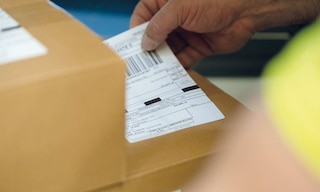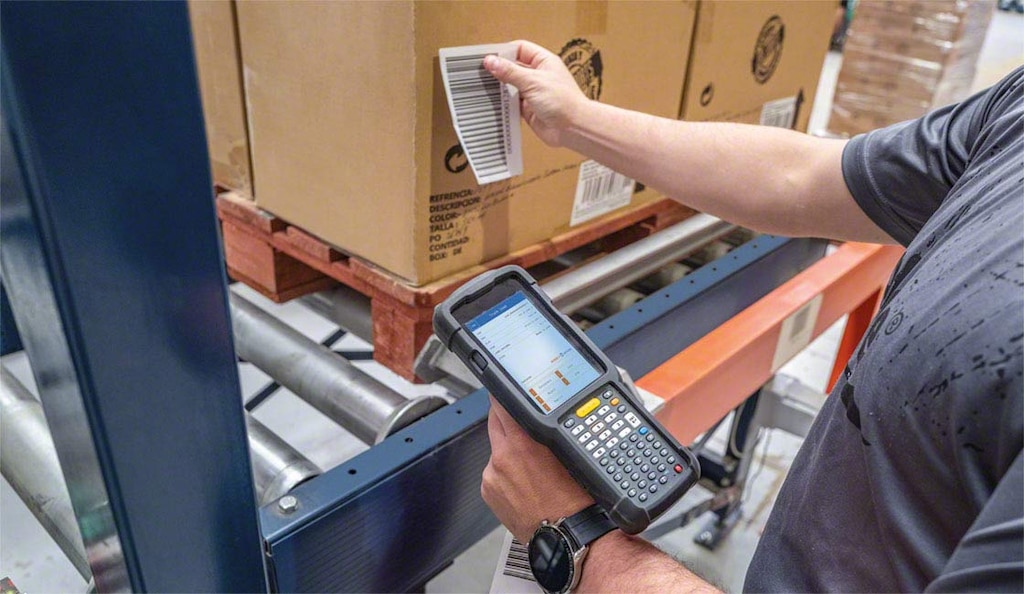
Lot number: Definition and importance in the supply chain
Lot numbers are crucial for optimizing storage and distribution by ensuring products reach customers in optimal condition. In the event of an issue — such as a defective food batch — the lot number allows businesses to locate and recall only the affected items, reducing waste and minimizing operational disruptions.
What is a lot number?
A lot number is a unique code assigned to a group of products manufactured, processed, packaged, or stored under the same conditions. It enables identification and traceability across the supply chain. This is essential in industries like food, pharmaceuticals, and manufacturing, where item coding in the warehouse is vital for safety and efficient inventory turnover.
Why are lot numbers important?
Using a lot number on products identifies a specific group of goods produced under similar conditions. This practice offers several key advantages:
- Traceability. Manufacturing lot codes enable item tracking from production to delivery using GS1-128 barcodes.
- Quality control. They help identify and isolate defective lots without affecting the entire product line.
- Inventory management. They improve stock organization and turnover, especially in industries where expiration dates are critical (e.g., food and pharmaceutical).
- Regulatory compliance. Many industries are legally required to record lot numbers to meet safety and compliance requirements.

What is the difference between lot number and serial number?
While both codes enhance traceability, they serve different purposes. A lot number groups goods made in the same production run, whereas a serial number uniquely identifies an individual item.
For example, in logistics, perishable goods are typically managed by lot number. Electronic devices and machinery, on the other hand, are tracked through serial numbers for more precise traceability.
| Lot number | Serial number | |
|---|---|---|
| Definition | Identifies a group of products manufactured under the same conditions. | Uniquely identifies a single product. |
| Main use | Tracks batches of goods. | Tracks individual items. |
| Application | Employed for mass-produced goods like food, medicine, and clothing. | Utilized for specific products (e.g., electronic devices, machines, etc.) |
| Format | Alphanumeric code shared across items. | Unique code for each item. |
| Quality control | Detects defects within a batch of goods. | Tracks issues with a specific item. |
| Inventory turnover | Ensures proper stock rotation (e.g., for perishable products). | Not typically used for turnover purposes. |
How is a lot number structured? Example
Lot numbers are created by combining various elements that identify a group of products with common characteristics, such as their production date and product code. Although the structure can vary by business or sector, a lot number usually includes:
- Product code. Identifies the merchandise.
- Production date. Often expressed in the format YYYYMMDD.
- Sequence number. Internal identifier employed to distinguish between product lots.
Example: For chocolate bars, the lot number 56789-20250215-003 consists of:
- Product code: 56789
- Production date: February 15, 2025 (20250215)
- Sequence number: 003
In regulated sectors like food and pharmaceuticals, lot numbers must comply with specific standards. Therefore, they’re often encoded in barcode formats like GS1-128 (formerly known as EAN-128) for full traceability.
How can technology streamline lot control?
A warehouse management system (WMS) improves lot tracking and supervision by ensuring full traceability. Interlake Mecalux’s Easy WMS allows users to record lot numbers as product attributes for real-time monitoring throughout the supply chain.
A case in point is Gusto, which supplies gourmet French, Italian, and other food to thousands of restaurants across France. The company uses Easy WMS to have a comprehensive view of its perishable goods. “It provides real-time information on how many lots we have and where each is stored. This makes us more rigorous and gives us complete confidence in our traceability,” says Laurent Knibbe, Founder and CEO.
Lot tracking also strengthens quality control. With Easy WMS, users can log and monitor each lot’s condition. This capability enables fast detection of product issues so that defective goods can be recalled without impacting other lots. “The WMS tracks SKUs, lots, serial numbers, and expiration dates very reliably,” says Matija Zaloker, Chief Accountant at Zaloker & Zaloker, a Slovenian medical supply distributor.
Easy WMS also supports inventory optimization. It enables companies to rotate their products based on expiration dates, which is paramount for the food and pharmaceutical industries. Dr. Gab’s, a craft brewery, leverages the software for full traceability of its bottles in addition to other benefits: “Easy WMS has numerous capabilities that make it highly competitive. For example, it can automate shipping in line with the FIFO method. This has made delivery preparation much faster,” says Reto Engler, Production and Supply Chain Director at Dr. Gab’s.

End-to-end product traceability across the supply chain
Lot numbers are fundamental for supply chain traceability. They not only improve an organization’s performance but also reinforce consumer safety and trust. Real-time visibility of a product’s location — from origin to destination — improves client communication (B2B and B2C) and supports operations that meet expectations. This is only possible with a next-generation traceability system.
Without the right software, product monitoring can become complicated and error-prone. A robust WMS makes all the difference. It automates lot tracking, boosts operational efficiency, reduces risks, and improves responsiveness to incidents. Want to unlock end-to-end traceability for your inventory? Contact us to discover how a WMS can enhance your entire supply chain.
